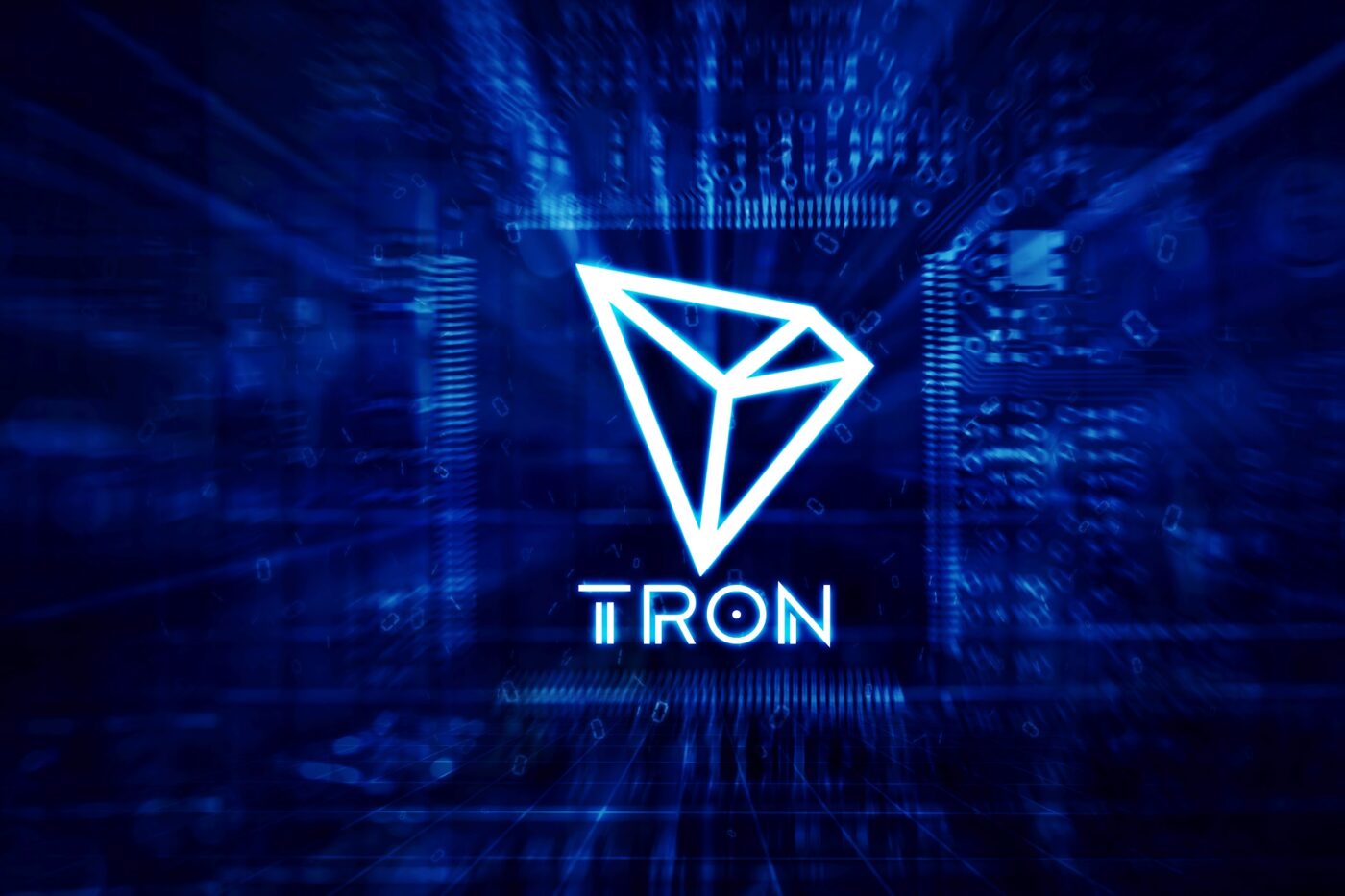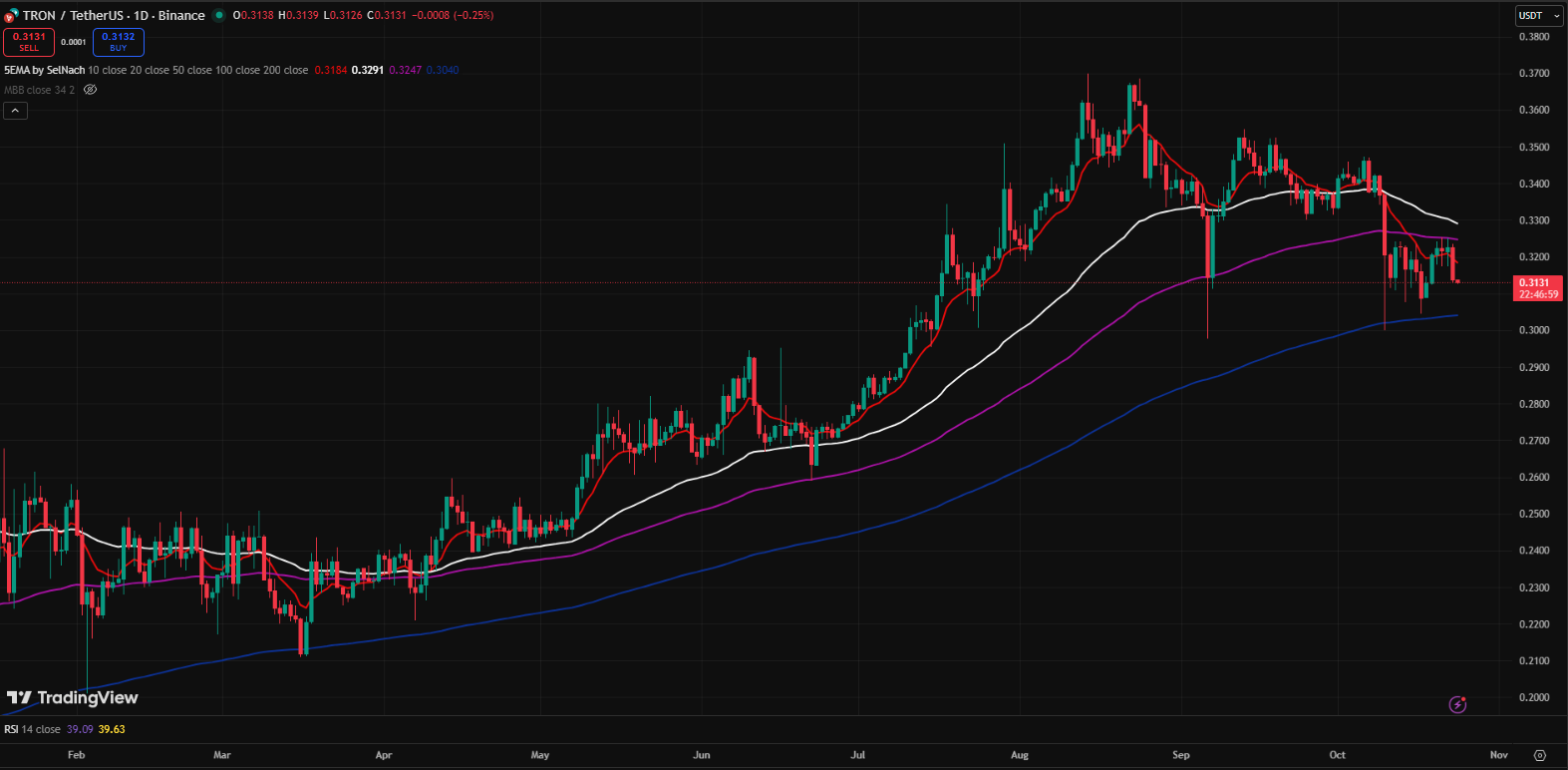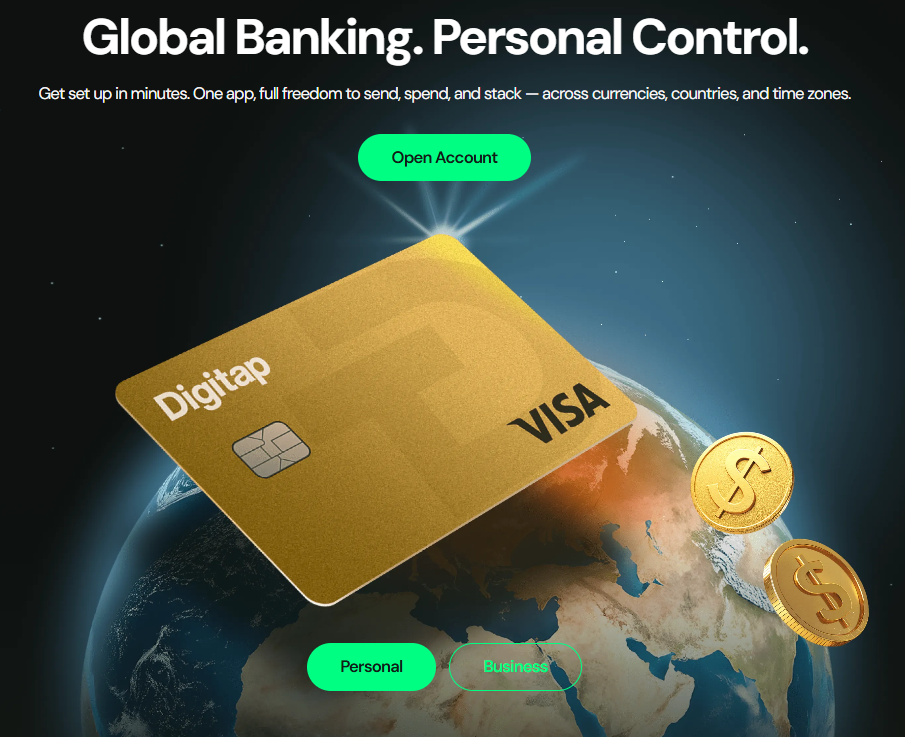Tron, the blockchain that has onboarded the most users in developing economies through practical utility, is facing an existential crisis. It has had a single advantage all this time. Tron was the cheapest highway for USDT transfers.
That edge is now crowded. Stablecoin-centric layer-1s are launching, such as Plasma and Tempo, which just raised $500 million, and are steadily eroding Tron’s edge. Investors are pricing this new competition, and TRX remains stuck below $0.32.
At the same time, Digitap ($TAP), a new omni-bank service provider, has taken the opposite route. Build the front end that ordinary finance will live on. It recently pushed its Tap-to-Pay live globally, and now users holding the Visa card can use Apple Pay and Google Pay at millions of locations worldwide.
On-chain balances can finally be spent in everyday stores, the presale has crossed $1 million, and it is clear that momentum is picking a side.
Tron’s Place in the Stablecoin Chain Wars
Tron offered low-fee USDT movement at a global scale. A simple, but highly effective use case. It still has a huge total addressable market, which is actually increasing in size thanks to the Trump administration’s hyper-scaling adoption of stablecoins. So why is TRX in a downtrend?
The map is changing. Stablecoin-native chains are arriving with lower fees, and if Tron’s strong point (low-cost) is undercut, the blockchain doesn’t have much to fall back on. Plasma is already offering free USDT transfers, and Tempo, a heavyweight fintech money chain, will likely offer the same.
The result is structural pressure. TRON remains a general-purpose layer-1 with impressive throughput, yet the fee advantage is no longer a one-horse race. Trading below $0.32 and at risk of losing the 200-day moving average at $0.30, the situation looks sticky for bulls.
But this tale is not new. When a network graduates from a hungry challenger to an incumbent, it is often pushed to the side by a new generation of more advanced projects.
What is Digitap?
Digitap is a single application that brings together all forms of value—it is the world’s first omni-bank. Fiat, stablecoins, and crypto live inside one account, and anyone can download the app on desktop, iOS, and Android today. The siloes between crypto and traditional finance no longer exist.
The multi-rail architecture can tap into public blockchains for on-chain settlement, where it is faster (cross-border payments) and established banking corridors such as SWIFT, SEPA, Faster Payments, and ACH when needed. Users can rest easy because all of this is abstracted away, and the routing engine always finds the optimal route.
When users want to pay with crypto using their Visa card, the engine makes the conversion, looking for the best price, whether that be an OTC desk or an on-chain DEX. This AI-powered decision engine constantly searches for the best route for every payment, transfer, and exchange.
Security and compliance are built in, and the exterior is a modern neoback but with a supercharged interoperability layer underneath. The next stage of the payments race is not about creating the cheapest block, but getting regular people to use stablecoins.
Pro-innovation policy is being implemented, institutions are allocating to BTC & ETH via ETFs, and stablecoins have already become crypto’s most successful product. The best spot to be is on the application layer, especially projects connecting digital dollars to day-to-day finance. That is the space Digitap occupies.
Tap-to-Pay Goes Live
Distribution is how applications become superstars. Digitap rolled out tap-to-pay, integrating Apple Pay and Google Pay support with its Visa card. Now, all over the world, users can spend crypto with a tap of their phone. The move is simple on the surface and powerful under the hood—exactly how consumer-grade finance wins adoption.
Banks own fiat rails and consumers trust them. That’s why Digitap integrated legacy rails. But when it comes to cross-border payments, correspondent banking networks cannot compete with blockchains. And that’s why Digitap integrated blockchains.
Users get all the comfort from the traditional world with all the horsepower from the new system. Even better, Digitap does not face the same problems as Tron.
As an interoperability layer (rail-agnostic), it benefits from more stablecoin-centric chains as it can integrate them. With stablecoins becoming the central focus, a platform that offers a convenient front end for normal users has outsized odds of outperforming.
TRX vs. $TAP: Different Game, Different Ceilings
The old generation of altcoins is increasingly coming under fire for not sharing revenue with token holders. $TAP doesn’t have this problem. 50% of profits are used to burn tokens, reducing the 2 billion supply over time, and 50% go to stakers, rewarding users supporting the platform.
All revenue and adoption growth feed the $TAP token, and this is what all altcoins should look like. While Tron remains a workhorse and central hub for stablecoin transfers, it now enters a fee-compression race.
Digitap will simply integrate the best chains as they come along. With more than a million raised since launch and a current price of $0.0194, soon increasing to $0.0268, $TAP is shooting to the top of the list of best cryptos to buy now.
Discover the future of crypto cards with Digitap by checking out their live Visa card project here:
Presale https://presale.digitap.app
Website: https://digitap.app
Social: https://linktr.ee/digitap.app
Disclaimer: This is a Press Release provided by a third party who is responsible for the content. Please conduct your own research before taking any action based on the content.








